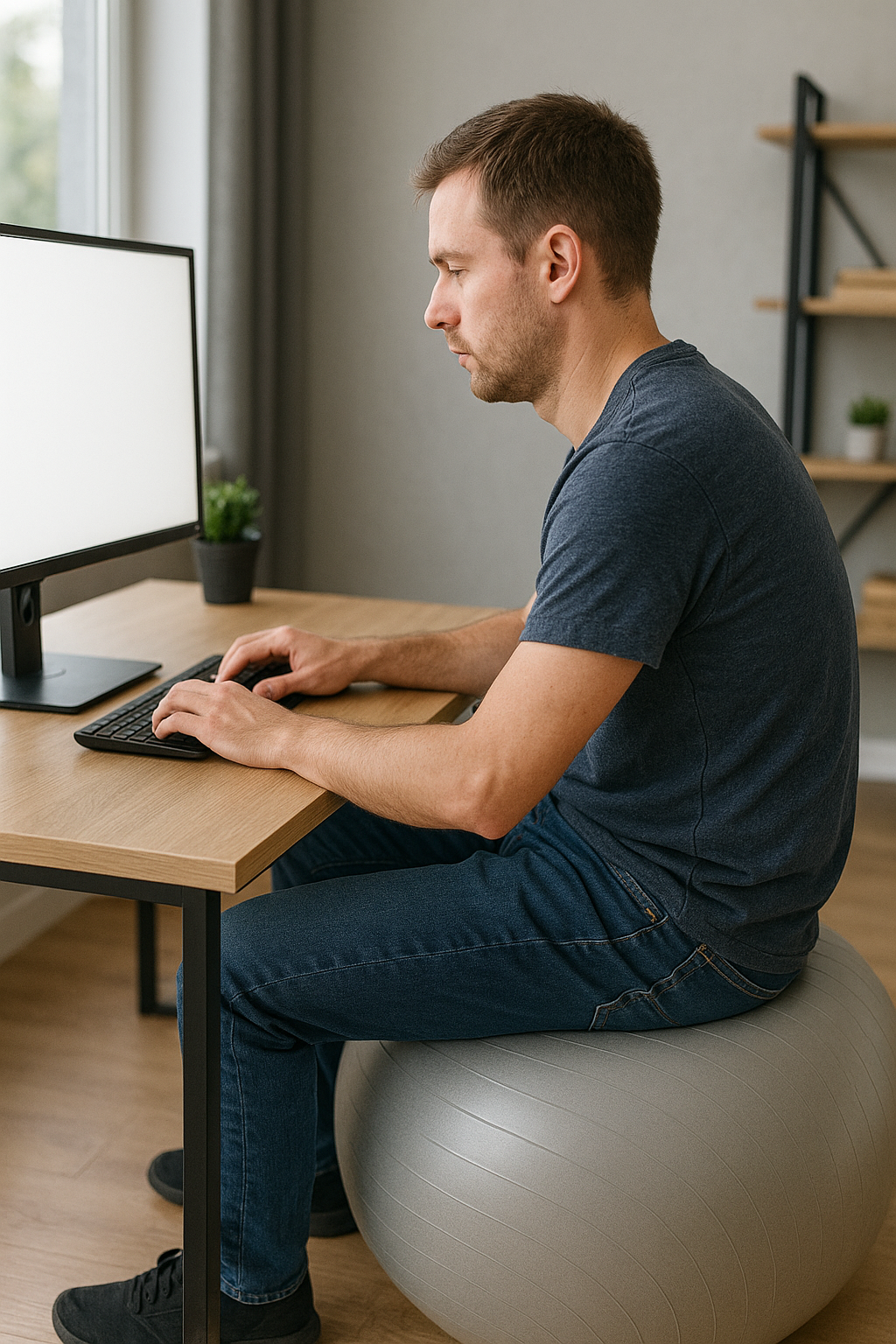 In today’s dynamic work landscape, hot desking has emerged as a popular trend, offering flexibility and efficiency in shared office spaces. However, amidst the convenience and adaptability it provides, it’s crucial not to overlook the significance of maintaining proper posture while hot desking. Whether you’re an experienced professional or new to the concept, understanding and implementing good posture habits can greatly enhance your wellbeing and productivity.
In today’s dynamic work landscape, hot desking has emerged as a popular trend, offering flexibility and efficiency in shared office spaces. However, amidst the convenience and adaptability it provides, it’s crucial not to overlook the significance of maintaining proper posture while hot desking. Whether you’re an experienced professional or new to the concept, understanding and implementing good posture habits can greatly enhance your wellbeing and productivity.
Here are our practical tips to support your posture health when you are hotdesking:
The Impact of Poor Posture
The way we sit and carry ourselves throughout the day can significantly affect our physical health and mental wellbeing. Poor posture can lead to a number of issues, including:
1. Musculoskeletal Pain
Slouching or sitting in awkward positions for extended periods can strain muscles, joints, and ligaments, leading to discomfort and pain in the neck, shoulders, back, and hips.
2. Reduced Productivity
Discomfort caused by poor posture can detract from your ability to focus and concentrate on tasks, ultimately impacting your productivity and efficiency.
3. Fatigue and Stress
Maintaining improper posture can increase feelings of fatigue and stress as your body works harder to support itself in compromised positions.
The Importance of Ergonomics
Ergonomics plays a crucial role in maintaining proper posture and mitigating the risks associated with prolonged sitting at your workstation. In a hot desking environment, where individuals share workstations and seating arrangements vary, adhering to ergonomic principles becomes even more essential. Here’s how you can optimise your workstation for better posture:
1. Adjust Your Chair
Ensure your chair provides adequate lumbar support to maintain the natural curve of your spine. Adjust the seat height so your feet rest flat on the floor, with your knees slightly lower than your hips. Armrests, if available, should allow your arms to relax comfortably with your shoulders relaxed.
2. Position Your Monitor
Position your monitor at eye level to prevent straining your neck. The screen should be an arm’s length away from you, with the top of the screen at eye level. Use a document holder if referencing papers frequently to avoid awkward neck positions.
3. Using a Laptop: Elevate and External Accessories
If you’re using a laptop at your hot desk, it’s crucial to take additional measures to maintain proper posture and ergonomics. Elevate the laptop screen to eye level (top of the screen to eye level) using a stand or riser, and use an external keyboard and mouse to promote better posture and reduce strain on your wrists and shoulders.
4. Maintain Neutral Posture
Sit back in your chair with your back supported and shoulders relaxed. Keep your elbows close to your body and your wrists straight while typing. Avoid crossing your legs or sitting with one leg tucked under you, as this can lead to uneven pressure distribution and strain.
5. Take Regular Breaks
Incorporate short breaks into your work routine to stretch and move around. Set reminders to stand up, stretch, and walk around every hour to alleviate muscle tension and improve circulation.
Cultivating Healthy Posture Habits
In addition to optimising your workstation setup, cultivating healthy posture habits throughout the day can further support your wellbeing:
1. Arriving Early to Set Up Your Workstation
In a shared environment, arriving just 5 minutes early allows you to personalise your workspace after someone else has used it the day before. This proactive approach ensures that you start your day in a comfortable and conducive environment, reducing stress and discomfort.
2. Mindful Awareness
Pay attention to your posture throughout the day, especially during periods of intense focus or distraction. Practice mindfulness techniques to check in with your body and make adjustments as needed.
3. Strengthening Exercises
Incorporate exercises that strengthen core muscles and improve flexibility to support good posture. Simple activities like yoga, Pilates, or regular stretching routines can help counteract the effects of prolonged sitting.
4. Educational Resources
Take advantage of resources and training programs offered by your employer or occupational health professionals to learn more about proper posture and ergonomics. Stay informed and engaged in initiatives aimed at promoting a healthy work environment.
By implementing these strategies, individuals can create a supportive work environment that promotes posture health, productivity, and overall wellbeing in the dynamic setting of hot desking.
If you are interested in exploring how our DSE Services can support you and your organisation’s goals, we invite you to get in touch.







